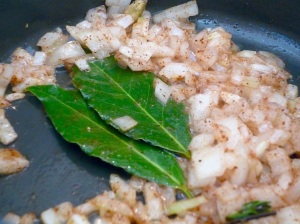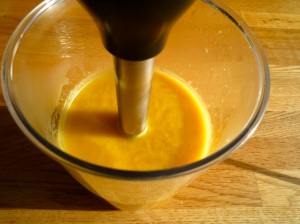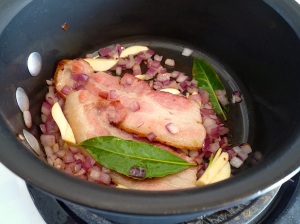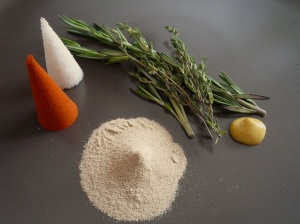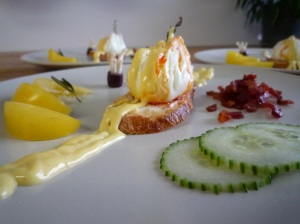Soups are always great during winter because they are so comforting. Often times though soups don’t get the same aesthetic treatment as main courses do. Here I made three simple and common soups but strove to make them not only delicious but visually appetizing as well.
The starting point for most dishes is always what is going to flavor the base. Here I neatly arranged the main elements that played in the layers of each soup. The first soup, a classic pumpkin cream, was complimented by cardamom and cloves. The second soup, a black bean puree, went hand in hand with ground cumin, coriander and cayenne pepper. The final soup, a bacon and split pea, relied on a touch of white pepper and sea salt crystals at the end. In addition to these spices I used fresh bay leaves for all three soups. On a side note, fresh spices and herbs tend to not give as much flavor as their dry counterparts.
For the first soup I started a simple base of melted butter with ground cloves and cardamom with the bay leaves. After the spices started bubbling a bit I added onions. Diced pumpkin followed with some chicken stock. Normally if I was cooking a larger amount of pumpkin soup I would bake it instead of steaming it in the pot with the stock (that way the pumpkin keeps more of its flavor). Once the pumpkin was cooked I pulled out the cardamom and bay leaves and blended it all together with some heated cream.
For the second soup I sauted some red onions, bacon and garlic as a base. Although there are infinite ways to make this soup, I stuck to fairly standard elements and seasonings. Once the bacon had rendered some of its water and had started to caramelize a bit I threw in the cayenne pepper, coriander, and cumin. As soon as the base was ready I added the black beans along with some chicken stock and let it simmer. Once the flavors had developed I blended it all together.
The final soup was probably the easiest, yet the one that took the longest. I rinsed the peas and cooked with them in water for roughly an hour. Once they had begun to break apart I added minced onions that had been sauteed in bacon fat along with a bit of cream and chicken stock.
After all three soups had been blended I garnished them with elements that complimented the bases. For the pumpkin soup I placed drops of cream along with some toasted pecans. For the black bean soup I added some shredded chicken, some freshly fried tortilla chips, and a tomato paprika coulis. As for the split pea soup, I went with the traditional: steamed carrots and bacon bits.
Here are the recipes. Yum!



